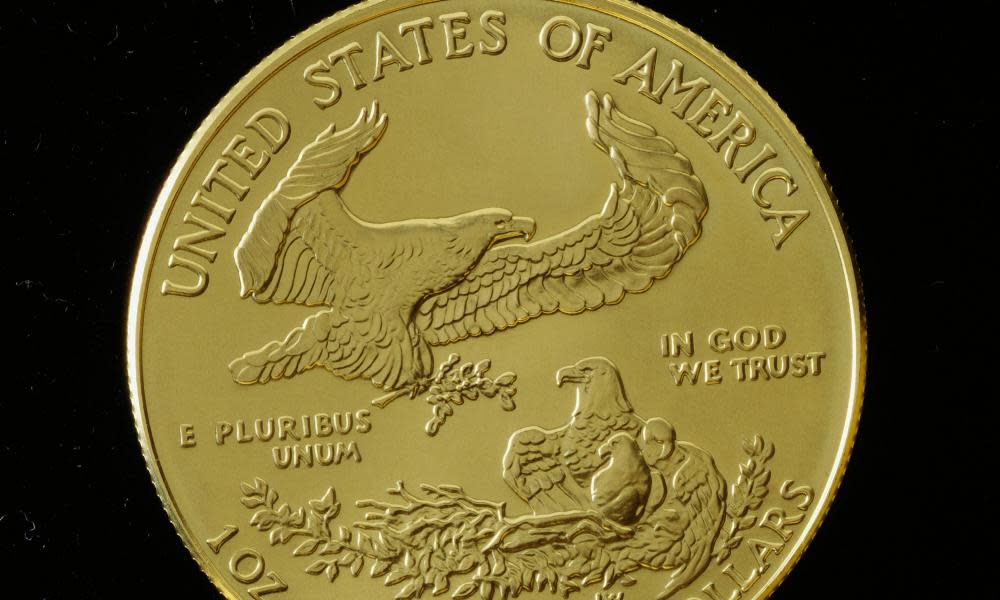The case for minting a $1tn coin to deal with America’s debt ceiling

The United States is again hurtling towards default on its “national debt”. While a two-month extension has emerged, the fundamental dynamic remains – and the risk. This is not happening because there is any danger of the Treasury being unable to find buyers for treasury securities. Nor is it happening because of any presumed “burden” from interest payments. Instead, it is happening because the United States Congress has placed an arbitrary limit on how much “national debt” the US government can incur. Congress has authorized and required a certain amount of spending – but is blocking the treasury’s preferred tool for financing that spending.
Related: US debt ceiling: an ill financial wind is blowing Australia’s way | Greg Jericho
Given how often politicians have invoked “the deficit” and “the debt”, it’s natural for the public to think that the debt ceiling represents a deeper “lack of money”. When news outlets like CNN publish contextless headlines claiming the “US government” will “run out of money” by a certain date, this impression is reinforced.
That framing, however, is all wrong. What’s going on is much more like an internal accounting mishap than a “cashflow” problem. After all, where does the US government bank? It banks with itself – the Federal Reserve Board. As the US second circuit court reminded us in 2019, the money created by the federal reserve system is a product of the federal government. Crucially, legally speaking the federal reserve system is subject to congressional control and oversight.
On a technical level, the Federal Reserve could fill up the Treasury’s account tomorrow. What it lacks is a legal instruction to do so. Normally that legal instruction comes from successful Treasury auctions. But there’s one problem: the debt ceiling prevents more of those auctions. Even if the Treasury could legally borrow from the Federal Reserve – which it can’t – in this case the debt it owed the Federal Reserve would count against the debt ceiling.
If the Treasury can’t make more debt, what if it … made a coin? Coins haven’t counted towards the debt ceiling and the US Mint already contributes significant “profits” every year. The trouble with coinage is that while there are no caps like the debt ceiling, there are different kinds of limits. Congress has specified exactly the materials in most US coins, and what denominations are on them. Most US coins … except for one.
In 1996 a modification of the coinage act passed Congress and was signed into law which allows the US mint to “mint and issue bullion and proof platinum coins in accordance with such specifications, designs, varieties, quantities, denominations, and inscriptions as the Secretary, in the Secretary’s discretion, may prescribe from time to time”.
Could we issue a trillion-dollar platinum coin, deposit it at the government’s bank and continue to make payments?
This is extraordinary power. And that was no accident. As Philip Diehl, US Mint director at the time and co-author of the bill, has said: “When we passed this law in 1996, it was with full knowledge that it was unprecedented in the history of US coinage. [Until then] Congress had always specified coin denominations by law.”
During the Obama administration’s debt ceiling fights an enterprising lawyer noticed this obscure provision and had the bold thought – could we issue a trillion-dollar platinum coin, deposit it at the government’s bank and continue to make payments? The provision, after all, says any denomination, just like the statute which provides for the Treasury secretary to issue government securities of any denomination. The difference merely, but importantly, being that the coin – like all other coins – would not be subject to the debt ceiling at all.
This accounting solution provides a way for the Treasury to fill up its bank account, continue to make payments (as Congress has directed it to) and all without violating any statute or provision of the constitution. Funds would flow out of the Treasury’s account like normal, while the Federal Reserve would sell some of its holdings of treasury securities to accomplish its monetary policy objectives.
Nothing economically would fundamentally change: there would be no additional soaring inflation from “printing money”. All that would happen is we would avoid the deleterious effects of coming close to or, devastatingly, actually defaulting. Without the threat of government default, holding the debt ceiling hostage would lose its power, and the antiquarian law would probably get repealed.
The coin may seem “silly”, or be considered a “gimmick”. But really it uses the federal government’s most basic constitutional power – to coin money – for one of the most basic purposes of public finance: paying our obligations. Feeling foolish is no excuse not to act.
Nathan Tankus is the research director of the Modern Money Network. He writes the Notes on the Crises newsletter

 Yahoo News
Yahoo News 
